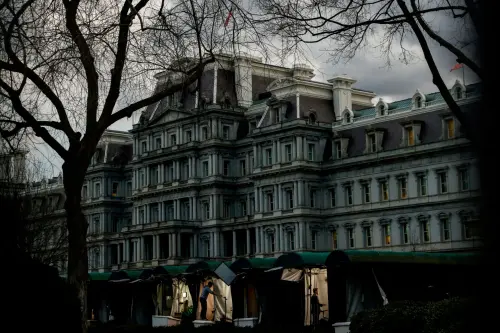It is time for President Trump to end the Obama administration’s policy of denying lethal defensive assistance to Ukraine, argue former U.S. ambassadors to Ukraine Steven Pifer and John Herbst. This piece originally appeared in the Washington Times.
President Trump has often expressed his desire to build a better, more positive relationship with Russia. However, as Secretary of State Tillerson has said, improved bilateral relations will not be possible without ending Russia’s aggression against Ukraine.
Washington has energized its diplomatic effort to settle the conflict, as demonstrated by the appointment of Kurt Volker as special envoy. But that more robust diplomatic effort needs backing by other steps, such as sanctions, to encourage the Kremlin to change its approach. It is also time for Mr. Trump to end the Obama administration’s policy of denying lethal defensive assistance to Ukraine.
In the aftermath of the 2014 Maidan Revolution in Kyiv, Russian military forces seized Crimea, which Moscow promptly and illegally annexed. Shortly thereafter, the Kremlin launched a covert, hybrid war in the eastern Ukrainian region of Donbas; it began with Russian leadership, funding, heavy weapons, ammunition and “volunteers”—but, at critical moments, regular units of the Russian army joined in. Three years of fighting have left some 10,000 dead.
Moscow could have ended the skirmishing at any time by abiding by the cease-fire and withdrawal of heavy weapons agreed to in the Minsk agreements of September 2014 and then February 2015. But the Kremlin has never implemented those provisions, preferring instead to maintain a simmering conflict as a means to pressure and destabilize the Ukrainian government.
The United States began assisting the Ukrainian military’s efforts to defend Donbas in 2014. Some of that assistance—counter-battery radars, drones and secure communications equipment—has proven crucially important to Kyiv’s soldiers.
The Obama administration, however, maintained a policy of providing only non-lethal military assistance. That prevented the Pentagon from filling a key gap in the Ukrainian army’s inventory—its lack of working man-portable anti-armor weapons—as the Russian military poured tanks and other armored vehicles into Donbas. Russian armor was a critical factor in their successful offensives against Donetsk airport and Debaltseve.
When the issue was considered in 2015, many within the U.S. government privately favored providing lethal assistance. So did Congress, Republicans and Democrats alike. But that was a decision for the president, and President Obama chose not to do so.
The rationale for providing lethal military assistance holds true today. Ukraine’s political and military leadership understands that they cannot drive the Russians and their proxies out of Donbas by force. Kyiv seeks to bolster its defensive capabilities—that is, to be able to impose more costs on any Russian attack and thereby deter the Russians from a new offensive.
If Kyiv can deny Moscow easy military options, that will increase the prospect that the Kremlin will adopt a different course, one that could lead to a peaceful settlement.
Secretary Tillerson appointed Ambassador Volker this past summer as part of a reinvigorated American bid to aid the effort to find peace in Donbas and thereby remove a large obstacle to better relations between Washington and Moscow. While looking for a way to help the Kremlin out of what increasingly appears to be a Donbas quagmire, the administration should also seek to raise the costs to Moscow of its current course. One way is to increase sanctions, building on the recent legislation enacted by Congress. Consistent with that legislation, the administration should specifically sanction the kleptocrats close to President Putin.
Another way is to provide lethal military assistance. That would improve the Ukrainian army’s ability to deter and defend. It would also send a strong signal to Moscow that the United States will firmly back Ukraine against Russian aggression.
Indeed, many U.S. officials favor providing lethal military assistance, and some state so openly. Last summer, the vice chairman of the Joint Chiefs of Staff told Congress that both U.S. European Command and the Joint Chiefs had recommended lethal assistance.
Recognizing that the United States is seriously considering providing such assistance, the Kremlin in recent weeks has shown what may be a hint of flexibility in its approach to its conflict with Ukraine. By offering a proposal on peacekeepers, however flawed, Mr. Putin may be hoping to persuade Washington not to provide defensive weapons to Kyiv.
This almost predictable ploy should not work on the president as he considers this issue.
When the supply of lethal defensive weapons was last seriously considered in the White House in 2015, Mr. Obama took an overly cautious approach. U.S. restraint in that regard has achieved nothing. Mr. Trump, who has shown a readiness to take bold action in Syria, should now drop the failed policy of his predecessor and approve lethal military assistance for Ukraine.
The Brookings Institution is committed to quality, independence, and impact.
We are supported by a diverse array of funders. In line with our values and policies, each Brookings publication represents the sole views of its author(s).









Commentary
Why Trump should arm Ukraine
November 17, 2017